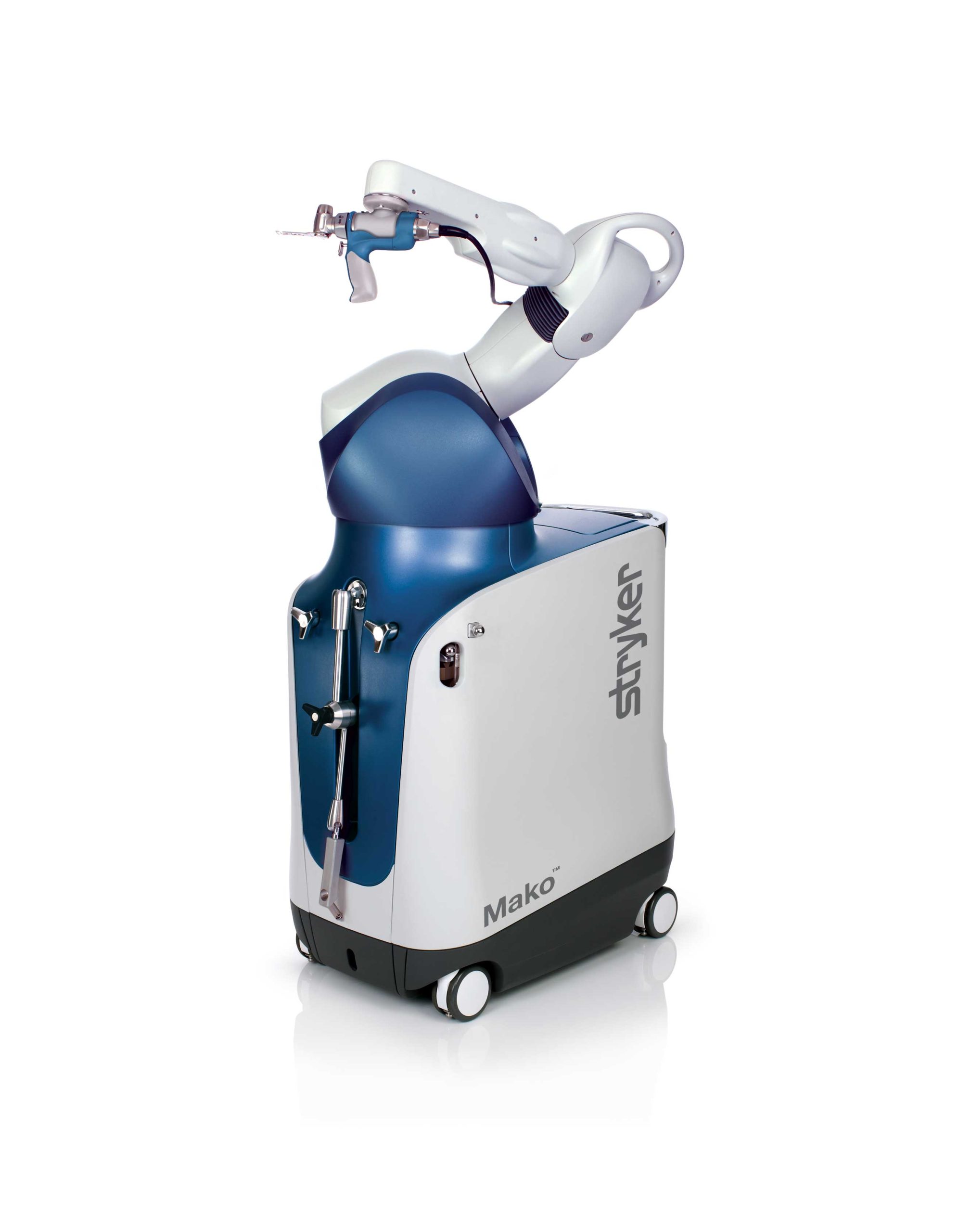
In recent years, advancements in medical technology have revolutionized orthopedic surgeries, particularly in knee replacements. Among these innovations, the Stryker Mako robot stands out for its ability to enhance surgical precision and improve patient outcomes, particularly in partial and total knee replacements.
Understanding Knee Replacements
Knee replacement surgery is a common procedure designed to relieve pain and restore function in knees damaged by arthritis or injury. There are two main types:
- Total Knee Replacement (TKR): In TKR, the entire knee joint is replaced with an artificial implant, consisting of metal and plastic components.
- Partial Knee Replacement (PKR): PKR involves replacing only the damaged part of the knee joint, preserving healthy bone and tissue. This is suitable for patients with limited knee arthritis.
The Role of Stryker Mako Robot
The Stryker Mako robot integrates advanced technology to assist surgeons in performing both partial and total knee replacements with unparalleled accuracy. Here’s how it works:
- Preoperative Planning: Before surgery, the surgeon uses a CT scan to create a 3D model of the patient’s knee. This allows for precise planning, identifying the optimal implant size and placement.
- Intraoperative Assistance: During surgery, the surgeon guides the robotic arm to execute the pre-planned procedure. The robot provides real-time data and feedback, assisting the surgeon in making precise cuts and adjustments.
- Enhanced Accuracy: The Mako robot enables more accurate implant alignment and fit, which is crucial for long-term success and durability of knee replacements. Studies have shown that this technology can lead to fewer complications and faster recovery times for patients.
Benefits of Using Stryker Mako Robot
- Improved Outcomes: Patients often experience less pain and faster recovery due to the precise nature of the surgery.
- Preservation of Healthy Tissue: In partial knee replacements, healthy tissue and ligaments are preserved, leading to a more natural feeling knee.
- Long-Term Durability: Proper alignment and fit of the implant contribute to the longevity of the knee replacement, reducing the need for revisions.
Patient Experience and Recovery
For patients undergoing knee replacement surgery with the assistance of the Stryker Mako robot, the recovery process can be smoother compared to traditional methods. The precise placement of the implant and preservation of surrounding tissue often result in improved range of motion and quicker return to daily activities.
The integration of robotic technology, particularly the Stryker Mako robot, has significantly advanced the field of knee replacements. By enhancing surgical precision and patient outcomes, this technology continues to redefine standards in orthopedic care. As more surgeons adopt robotic-assisted techniques, the future holds promise for further improvements in the effectiveness and accessibility of knee replacement surgeries worldwide.
Iowa Ortho’s Dr. Ben Wilke, is now offering advanced robotic-assisted partial and total knee replacements using the state-of-the-art Mako system. Discover if you’re a candidate for this innovative procedure by calling us at 515-247-8400 or requesting an appointment online today.
